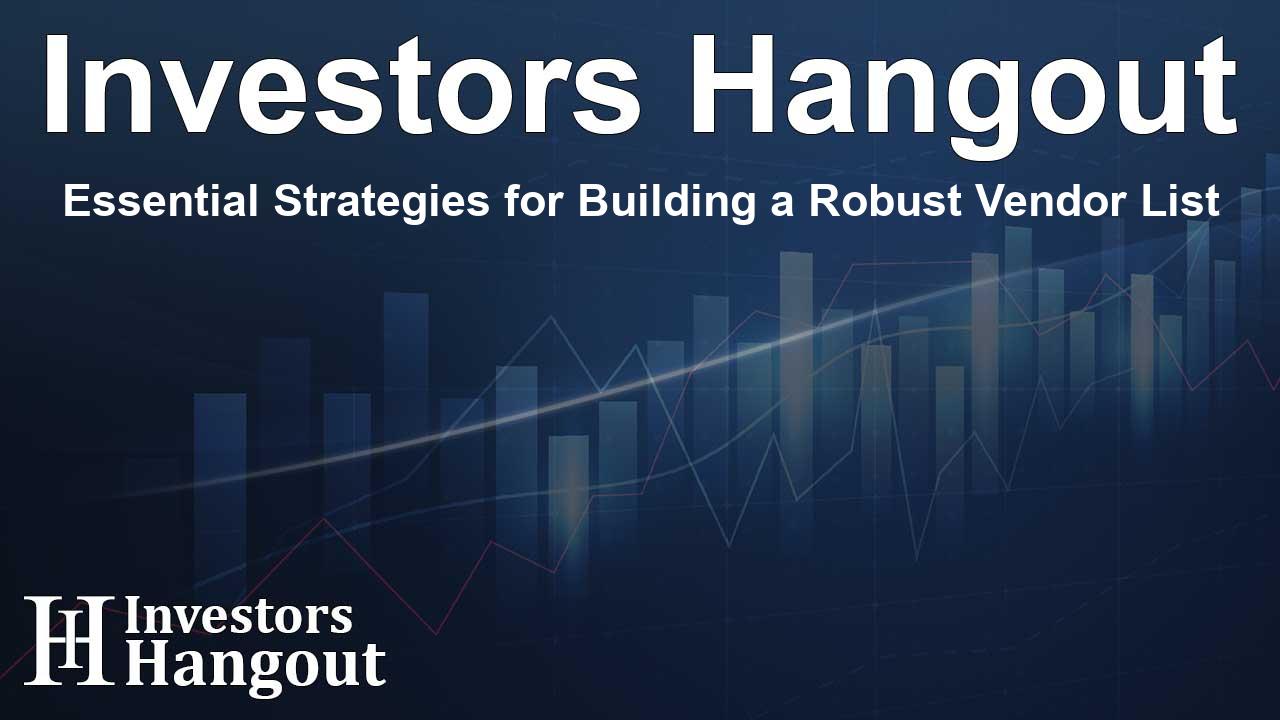Essential Strategies for Building a Robust Vendor List

Understanding the Importance of a Strong Vendor List
In today's competitive landscape, constructing a reliable vendor list is crucial for businesses, especially when it comes to software purchases. Research shows that many organizations struggle with software decisions, often regretting at least one purchase in recent months. This article aims to guide you through the process of building a successful vendor list, based on insights derived from a comprehensive survey of thousands of companies around the globe.
Stage 1 – Initial Compilation of the Vendor List
The journey begins as soon as the decision to invest in software is made. At this juncture, it's common for buyers to brainstorm options informally. However, mistakes made in this early stage can be detrimental to the overall purchasing experience.
One critical piece of advice is to avoid singular decision-making, even in smaller companies. Data suggests that buyers who operate independently are more prone to regrets. Instead, forming a diverse team including IT experts, purchasing stakeholders, and end users can significantly enhance the evaluation process.
Setting clear goals and outcomes is also a pivotal step. Having a defined purpose—your 'north star'—can give direction to your search. Interestingly, businesses that outline their objectives beforehand experience higher success rates compared to those who act without a specific purpose.
Moreover, successful buyers consider vendor reputation and product experience more than regretful buyers, making it essential to leverage internal knowledge when curating the initial list.
Stage 2 – Refining Your Shortlist
Once the informal list is laid out, it’s time for formal research. This stage is where successful buyers excel by being willing to adapt and explore additional vendors that might have been overlooked initially.
It’s essential to utilize objective sources during this refinement process. Recommendations from industry experts, product comparison platforms, and verified reviews provide the best insights for narrowing down choices effectively.
Despite the rise of AI tools in research, caution is advised. Statistics reveal regretful buyers frequently rely on output from AI models like ChatGPT, which can lead to less informed decisions. Instead, focus on quality resources established in the industry.
The Value of Expert Recommendations
Expert opinions stand out as a key component in crafting an effective shortlist. Businesses should prioritize advice from knowledgeable figures and leverage in-depth product comparisons. Successful buyers tend to streamline their choices, leading to a more manageable shortlist.
Stage 3 – Engaging with Potential Vendors
Upon identifying promising software options, the next step is to reach out to vendors and explore their offerings through product demos and trials. Engaging multiple vendors can seem tedious, but this effort pays off significantly in the long run.
It's vital to understand how software fits within existing systems, determine user-friendliness, and assess technical support and training requirements. Accurate evaluation hinges on these practical trials to ensure they meet the specific needs of the business.
Another critical insight involves understanding the total cost of ownership. Many businesses face unexpected expenses post-purchase that lead to dissatisfaction. By clarifying all potential costs during discussions, businesses can avoid regrets stemming from financial surprises.
The Importance of Timely Evaluations
Timing can make or break a software decision. Most successful buyers complete their evaluations within three months, demonstrating the balance between thoroughness and efficiency. In contrast, prolonged deliberations often lead to missed opportunities and eventual regrets.
Conclusion: Rethinking Your Approach to Vendor Lists
According to recent statistics, a significant number of organizations plan to increase their software investments. This trend reinforces the need for companies to reassess their vendor compilation processes. By utilizing the techniques outlined above, businesses can forge a robust strategy that ultimately helps in making informed purchasing decisions.
Frequently Asked Questions
Why is a solid vendor list important?
A strong vendor list helps organizations make informed software purchasing decisions, reducing the chances of regret and ensuring alignment with business goals.
How can businesses improve their vendor list creation process?
Engaging diverse team members, setting clear goals, using expert recommendations, and being flexible in research can enhance the vendor list process.
What role does user experience play in vendor selection?
User experience is critical as it determines how effectively the software will fit into current systems and meet the end-users' needs.
How can companies avoid unexpected costs in software purchases?
By discussing all potential costs upfront with vendors, companies can minimize the risk of encountering hidden expenses post-purchase.
What’s the ideal timeframe for evaluating vendor options?
Most successful buyers complete evaluations in three months or less, which allows them to capitalize on opportunities without getting caught in unnecessary delays.
About The Author
Contact Riley Hayes privately here. Or send an email with ATTN: Riley Hayes as the subject to contact@investorshangout.com.
About Investors Hangout
Investors Hangout is a leading online stock forum for financial discussion and learning, offering a wide range of free tools and resources. It draws in traders of all levels, who exchange market knowledge, investigate trading tactics, and keep an eye on industry developments in real time. Featuring financial articles, stock message boards, quotes, charts, company profiles, and live news updates. Through cooperative learning and a wealth of informational resources, it helps users from novices creating their first portfolios to experts honing their techniques. Join Investors Hangout today: https://investorshangout.com/
The content of this article is based on factual, publicly available information and does not represent legal, financial, or investment advice. Investors Hangout does not offer financial advice, and the author is not a licensed financial advisor. Consult a qualified advisor before making any financial or investment decisions based on this article. This article should not be considered advice to purchase, sell, or hold any securities or other investments. If any of the material provided here is inaccurate, please contact us for corrections.
